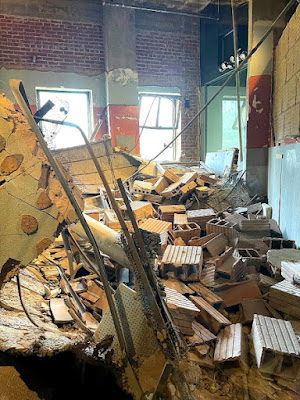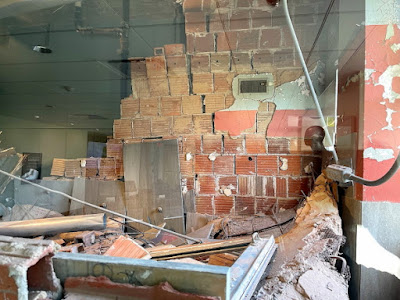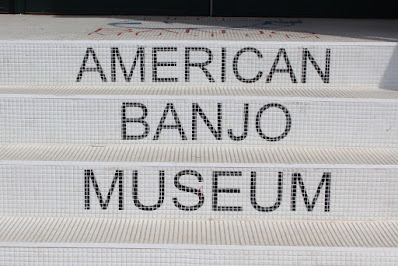The Oklahoma City National Memorial & Museum honors victims, survivors, and rescuers who were affected by the Alfred P. Murrah Federal building bombing on April 19, 1995. A reflecting pool and various exhibits related to the bombing are now located on the Murrah building site and surrounding area.
 |
| Photographer Unknown |
North of the Reflecting Pool is the Survivor Tree and Journal Record Building that is now the Oklahoma City National Memorial Museum.
For stabilization, a pedestal has been constructed around the Survivor Tree (an American Elm). Although heavily damaged by the blast, the tree survived and now hundreds of seeds from the tree are harvested annually. Then, each year on April 19 (bombing date), new saplings from the seeds are distributed for planting at public and private places.
On the south side of the Reflecting Pool is the Field of Empty Chairs, consisting of 168 hand-crafted bronze chairs. Each chair represents a person that lost their life in the bombing.
After the bombing a 10-foot tall fence was constructed around the site to protect the area while the Memorial was being constructed. During the four year construction period, people left stuffed animals, poems, and other mementos on the fence to remember those who perished.
When construction was completed, 210 feet of the fence was moved to the west side of the site and now serves as a permanent Memorial Fence where people can still leave items.
A Children's Area at the Museum entrance contains handprints and hand-painted tiles from all over the United States and Canada. The tiles were made by school children and sent to Oklahoma City after the bombing.
Located within the Museum are three-floors of photographs, actual recovered items, stories, and recreations of what the ruins looked like after the blast. The actual car that Timothy McVeigh was driving when arrested is also on display.
Located just northeast of the Capitol building is the Oklahoma History Center, various works of art, a veteran's memorial, and a display of historic oil drilling equipment.
The American Banjo Museum has the largest collection of banjos on public display in the world. Exhibits from every era present the banjo's evolution using historical instruments, songbooks, photographs, and other memorabilia. Banjos belonging to modern-day players are also on display.























































No comments:
Post a Comment